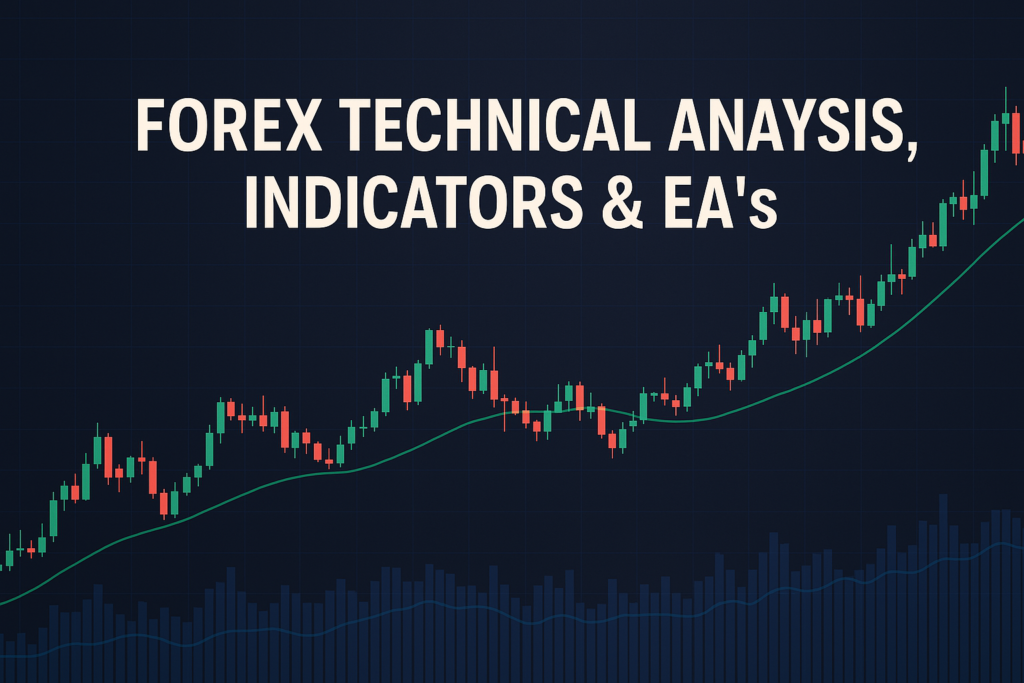
Moving average on TradingView is a vital tool for Forex traders, helping them spot trends and make informed decisions.
The moving average on TradingView is a powerful tool for Forex traders. It helps to smooth out price data and identify trends over time. When you look at a chart, you can see how the price moves in a way that is easier to understand. This is especially useful in the fast-paced world of Forex trading, where prices can change rapidly.
However, many traders, whether beginners or professionals, often struggle with using moving averages effectively. They may find it challenging to interpret the signals or choose the right type of moving average for their strategy. Understanding how to apply moving averages correctly is crucial for making informed trading decisions and improving chances for success.
This article will explore the concept of moving averages on TradingView, their history, advantages, and disadvantages, as well as practical strategies for applying them in Forex trading. We want to ensure that you leave with clear knowledge on how to use this tool effectively.
The accumulation distribution indikatörü is another important indicator in Forex trading. It helps traders understand the relationship between price movement and volume, providing insights into potential market trends.
What is a Moving Average on TradingView?
A moving average on TradingView is a simple way to look at price data over a specific period. Imagine you are tracking the temperature in your city every day. Instead of focusing on one day’s temperature, you can take the average of the last seven days. This gives you a clearer picture of whether it’s getting warmer or colder. In Forex trading, moving averages serve a similar purpose. They help traders see the general direction of a currency’s price.
Types of Moving Average on TradingView
There are a few different types of moving averages you can use on TradingView:
- Simple Moving Average (SMA): This is the most basic type, calculated by adding the closing prices over a certain period and dividing by that number.
- Exponential Moving Average (EMA): This gives more weight to recent prices, making it more responsive to new information.
- Weighted Moving Average (WMA): Similar to EMA, but it assigns weights to past prices based on their age.
How Moving Average on TradingView Smooths Out Price Action
Moving averages help to smooth out the noise in price action. When you look at a price chart, you might see lots of ups and downs. It can be hard to tell which way the price is really going. A moving average takes those fluctuations and creates a smoother line, allowing traders to see the overall trend more clearly.
Common Periods Used and Why
Traders often use different periods for moving averages, such as 10, 20, 50, or 200 days. A shorter period (like 10 days) reacts quickly to price changes, while a longer period (like 200 days) gives a broader view. For example, if you are a day trader, you might use a 10-day moving average to catch quick shifts. If you are looking at long-term trends, a 200-day moving average could be more useful.
The History of Moving Average on TradingView: How It Became Popular
Origin of Moving Average on TradingView
Moving averages have been around for a long time, dating back to the early 1900s. They were developed as a way to analyze stock prices and trends. Traders needed a way to filter out random price movements and focus on the bigger picture.
When Did Traders Start Using It Widely?
As technology advanced, moving averages became more accessible. With the rise of trading platforms like TradingView, traders could easily apply these indicators to their charts. This accessibility led to a surge in their popularity among Forex traders.
Real-Life Stories
Many professional traders credit moving averages for their success. For example, one trader used moving averages to identify a strong bullish trend in the Euro. By entering a position at the right moment, they made a significant profit. These stories show how effective moving averages can be when used correctly.
Advantages and Disadvantages of Moving Average on TradingView
Advantages:
- Helps Identify Trends Easily: Moving averages make it simple to see if a currency is trending up or down.
- Useful for Dynamic Support and Resistance: Moving averages can act as support or resistance levels, helping traders decide when to enter or exit trades.
- Works Well for Crossover Strategies: Traders often use moving average crossovers to signal buy or sell opportunities.
Disadvantages:
- lags Behind Price Movements: Moving averages are based on past prices, so they may not react quickly enough to sudden changes.
- Can Give False Signals in Sideways Markets: In choppy markets, moving averages can generate misleading signals, making it difficult to trade effectively.
How to Apply Moving Average on TradingView on MT4 & MT5
Step-by-Step Guide to Adding Moving Average on TradingView on Charts
To add a moving average on TradingView, follow these steps:
- Open your TradingView account and select the chart you want to analyze.
- Click on the “Indicators” button at the top.
- Search for “Moving Average” and click to add it to your chart.
Customizing Moving Average on TradingView Settings
You can customize your moving average settings. Click on the moving average line on your chart. A menu will appear, allowing you to change the period, color, and type of moving average. This helps you tailor it to your specific trading strategy.
Saving Templates for Easy Application
If you find settings you love, save them as a template. Click on the “Templates” option, then “Save Indicator Template.” This way, you can easily apply your favorite moving average settings to other charts later.
5 to 7 Trading Strategies Using Only Moving Average on TradingView
All Time Frame Strategy (M5 to D1)
This strategy works on all time frames. You can use a combination of short and long moving averages. For example, a 10-day and a 50-day moving average. When the 10-day crosses above the 50-day, it’s a buy signal. Conversely, when it crosses below, it’s a sell signal.
Trending Strategies
In a trending market, use a longer moving average like the 200-day. When the price is above the 200-day moving average, look for buying opportunities. If the price is below, consider selling.
Counter Trade Strategies
In range-bound markets, you can use moving averages to identify potential reversals. If the price approaches a moving average and bounces back, it may signal a good selling opportunity.
Swing Trades Strategies
For swing trading, consider using a combination of moving averages and price action. If the price is above the moving average and shows signs of a pullback, it might be a good time to enter a buy trade.
5 to 7 Trading Strategies Combining Moving Average on TradingView with Other Indicators
All Time Frame Strategy (M5 to D1)
Combine moving averages with the RSI (Relative Strength Index). When the RSI indicates oversold conditions and the price is near the moving average, it can signal a buying opportunity.
Trending Strategies
Use moving averages with MACD (Moving Average Convergence Divergence). When the MACD line crosses above the signal line, and the price is above the moving average, consider it a bullish signal.
Counter Trade Strategies
Combine moving averages with Bollinger Bands. If the price hits the lower Bollinger Band and is below the moving average, it may signal a good buying opportunity.
Swing Trades Strategies
For swing trades, use moving averages along with Fibonacci retracement levels. If the price retraces to a Fibonacci level and touches the moving average, it can provide a great entry point for a buy.
Sometimes, traders face issues with forcibly closing their trades. Understanding how to manage this risk is key to successful trading.
Top 10 FAQs About Moving Average on TradingView
1. What is a moving average?
A moving average is a calculation used to analyze data points by creating averages over different periods. In Forex trading, it helps smooth out price data.
2. Why is moving average important?
It helps traders identify trends, dynamic support and resistance levels, and make informed decisions based on price movements.
3. How do I add moving average on TradingView?
Click on the “Indicators” button, search for “Moving Average,” and add it to your chart. Customize it as needed.
4. What are the different types of moving averages?
The main types are Simple Moving Average (SMA), Exponential Moving Average (EMA), and Weighted Moving Average (WMA).
5. How do I choose the right period for moving averages?
Shorter periods react quickly to price changes, while longer periods provide a broader view. Choose based on your trading style.
6. Can moving averages provide false signals?
Yes, especially in sideways markets. They can sometimes mislead traders into thinking there is a trend when there isn’t.
7. How do I combine moving averages with other indicators?
Use them alongside indicators like RSI, MACD, or Bollinger Bands to confirm signals and improve trading decisions.
8. What is the best time frame for moving averages?
It depends on your trading strategy. Short-term traders may prefer M5 or M15, while long-term traders might use D1 or W1.
9. Are moving averages suitable for all market conditions?
They work best in trending markets and may not be as effective in choppy or sideways markets.
10. How can I practice using moving averages?
Use a demo account to apply moving averages in different trading scenarios without risking real money.
Conclusion
In summary, moving averages on TradingView are essential tools for Forex trading. They help traders understand trends, identify support and resistance, and make informed decisions. Remember to test different strategies and find what works best for you.
Before using real money, practice your strategies with a demo account. This will boost your confidence and help you become a more successful trader.
Stay ahead of the game by reading expert-backed advice on this topic Trading Economics, FX Empire
Expand Your Knowledge
- 📌 Forex Trading Learning Road Map
- 📌 Forex Trading Course with no Fees
- 📌 Forex Trading Issues, Problems, and Solutions
- 📌 Forex Daily Forecast & Live Updates
- 📌 Forex Fundamental & News Analysis: Tomorrow’s Market Movers & Trade Opportunities
- 📌 Forex Education Hub: Learn & Profit
- 📌 Forex Technical Analysis, Indicators & EA’s
Start Trading Today
Ready to take your forex trading to the next level? Open an account with Exness, one of the most trusted platforms in the industry. 👉 Sign Up Now and trade with confidence!
My recommended broker stands out with ultra-low spreads for beginners, instant withdrawals, and zero spread accounts for pro traders.
Trusted since 2008, lightning-fast execution, no hidden fees, and a secure, transparent trading environment—giving you the edge you need to succeed. 🚀
Watch this helpful video to better understand moving average on tradingview:
Note: The video above is embedded from YouTube and is the property of its original creator. We do not own or take responsibility for the content or opinions expressed in the video.
In this YouTube video, the presenter shares an effective strategy for trading with the moving average indicator, specifically focusing on the moving average crossover method. While this strategy is popular among traders, many often misuse it by taking immediate positions whenever the faster moving average crosses over the slower one. This approach can lead to significant losses, particularly in non-trending or ranging markets where false signals are more common. The video emphasizes that rather than acting impulsively on these crossover signals, traders should first assess the market’s tendency to react to such crossovers. By analyzing price behaviors in relation to the moving averages, traders can identify whether a market typically follows these signals or disregards them.
Additionally, the presenter recommends utilizing two moving averages, specifically the 20-period and 50-period, while trading on higher time frames, such as daily or one-hour charts. This strategy allows traders to make informed decisions based on historical market reactions to crossovers. Furthermore, the video discusses incorporating exit indicators, like the ATR trailing stop loss, to optimize trade exits instead of relying solely on moving average crossovers. Another innovative way to use moving averages is to treat them as support and resistance levels, pairing them with other indicators like the stochastics for more precise entry and exit points. By following these guidelines, traders can enhance their chances of success and achieve a more consistent trading performance.
For those interested in the market outlook, the “USDCHF forecast May 02, 2025” will provide valuable insights into potential trends and price movements, helping traders make informed decisions in their trading strategies.




